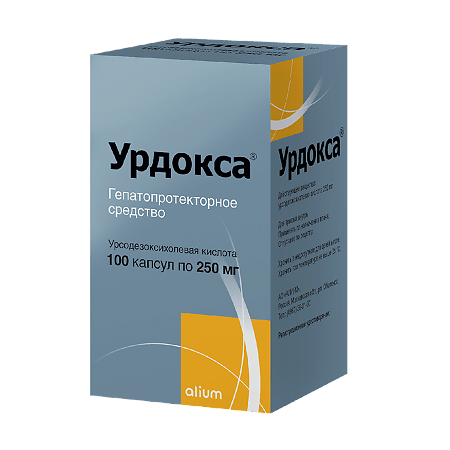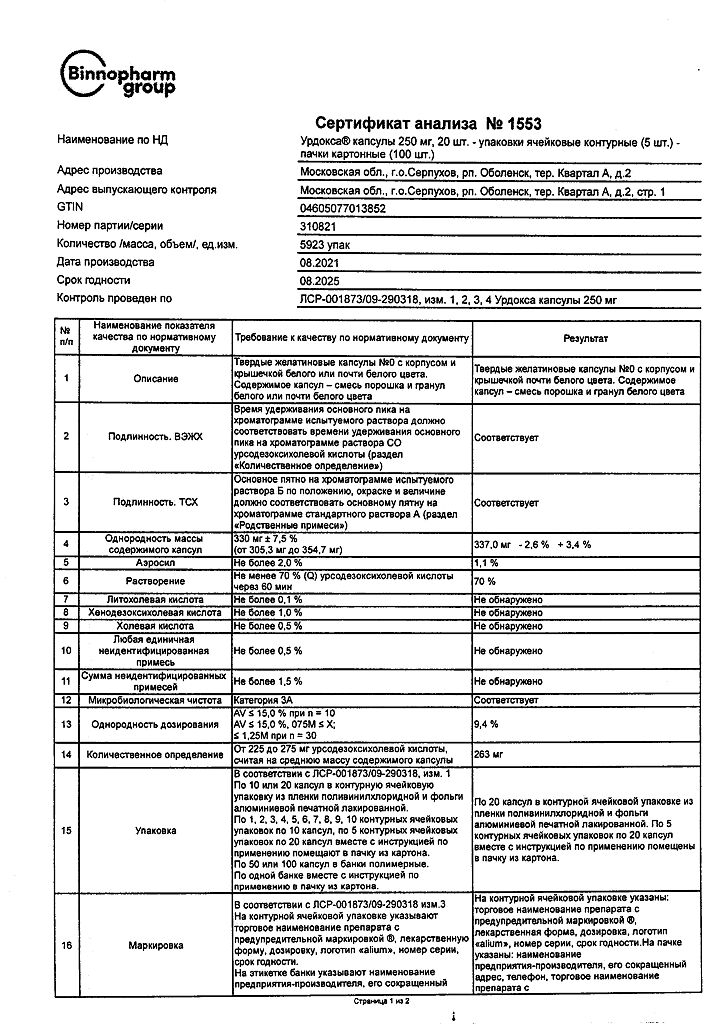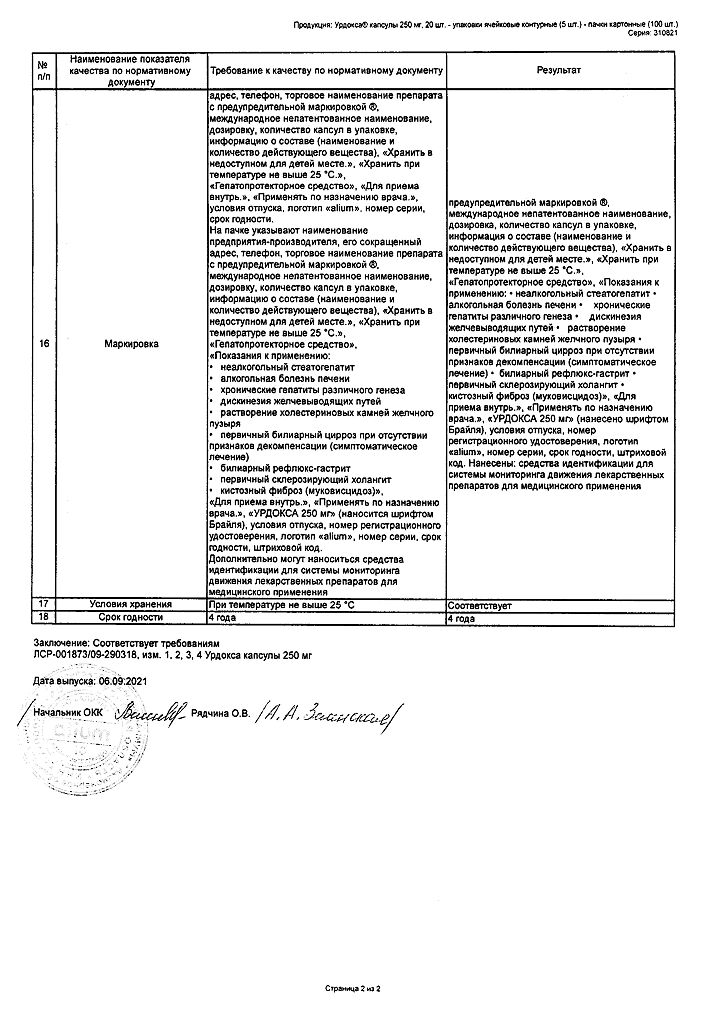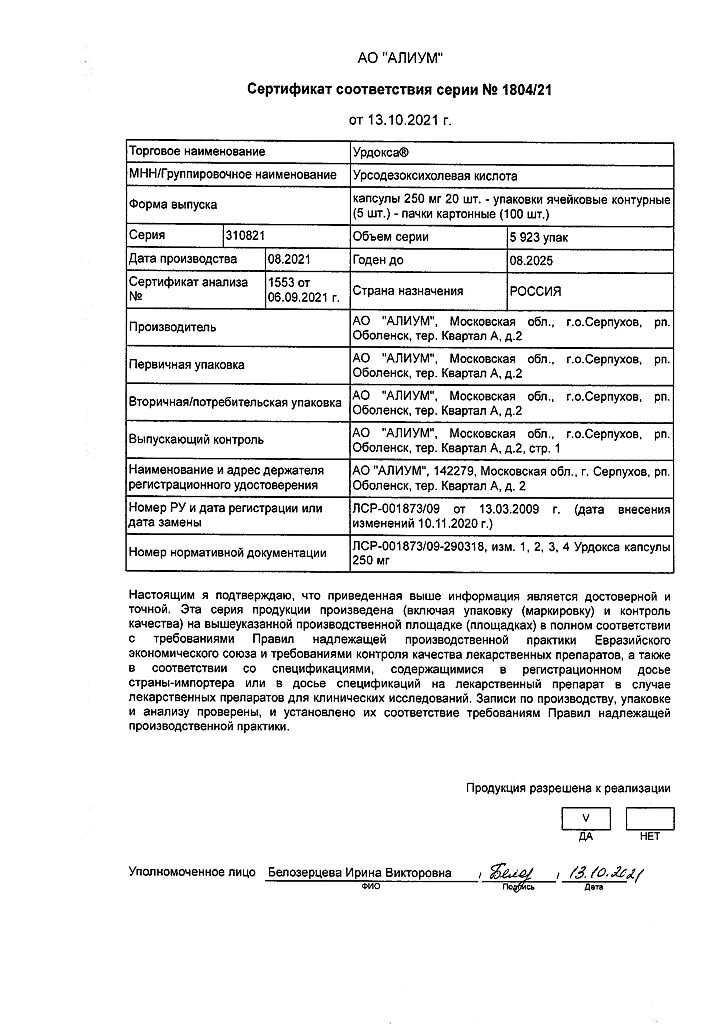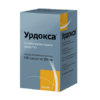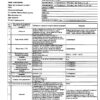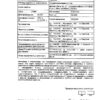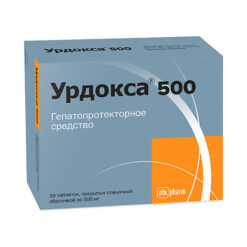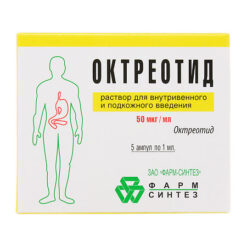No products in the cart.
Urdoxa, 250 mg capsules 100 pcs
€42.12 €35.10
Description
Pharmacological action
Pharmacological action – hepatoprotective, choleretic, cholelitholytic.
ATH Code
A05A02
Pharmacodynamics
. Hepatoprotective drug, also has choleretic, cholitholytic, hypocholesterolemic, hypolipidemic, immunomodulatory action.
It integrates into hepatocyte membrane, stabilizes its structure and protects it from the damaging action of bile acids salts thus reducing their cytotoxic effect. In case of cholestasis it activates Ca2+-dependent α-protease and stimulates exocytosis, decreases concentration of toxic bile acids (chenodeoxycholic acid, lithocholic acid, deoxycholic acid), which concentrations are increased in patients with chronic liver diseases.
Concurrently decreases absorption of lipophilic bile acids in the intestine, increases their fractional turnover in enterohepatic circulation, induces choleresis, stimulates bile passage and excretion of toxic bile acids through the intestine.
It shields non-polar bile acids (chenodeoxycholic acid), thus forming mixed (non-toxic) micelles.
Reduces the saturation of bile Chs by reducing the synthesis and secretion of Chs in the liver and inhibiting its absorption in the intestine.
Increases the solubility of Chs in the biliary system, stimulates the formation and excretion of bile. It decreases lithogenicity of bile, increases concentration of bile acids in it, enhances gastric and pancreatic secretion, increases lipase activity and has hypoglycemic effect.
Causes partial or complete dissolution of cholesterol gallstones, decreases bile Chs saturation that promotes its mobilization from gallstones.
It has immunomodulatory effect, affects immunological reactions in the liver: it decreases the expression of some histocompatibility antigens – HLA-1 on membrane of hepatocytes and HLA-2 on cholangiocytes, affects the number of T-lymphocytes, IL-2 formation, decreases the number of eosinophils, suppresses immunocompetent Ig (primarily IgM).
Pharmacokinetics
UDCA is absorbed in the small intestine by passive diffusion (about 90%) and in the ileum by active transport. Cmax in plasma when administered orally at a dose of 50 mg after 30, 60, 90 min is 3.8, 5.5 and 3.7 mmol/l, respectively. Cmax is reached after 1-3 hours.
The binding to plasma proteins is high – up to 96-99%. It penetrates through the placental barrier. If UDCA takes the drug systematically, it becomes the main bile acid in blood serum, and forms about 48% of total amount of bile acids in blood. The therapeutic effect of the drug depends on the concentration of UDCA in bile.
Metabolized in the liver (clearance during the first passage through the liver) into taurine and glycine conjugates. The resulting conjugates are secreted into the bile.
About 50-70% of the total dose of the drug is excreted with bile. A small amount of unabsorbed UDCA enters the colon, where it is cleaved by bacteria (7-dehydroxylation); the resulting lithocholic acid is partially absorbed from the colon, but sulfated in the liver and rapidly excreted as sulfolithocholylglycine or sulfolithocholyltaurine conjugate.
Indications
Indications
primary biliary cirrhosis in the absence of signs of decompensation (symptomatic treatment);
dissolution of cholesterol gallstones;
biliary reflux gastritis;
primary sclerosing cholangitis;
alcoholic liver disease;
non-alcoholic steatohepatitis;
cystic fibrosis (cystic fibrosis);
chronic hepatitis of various origins;
biliary dyskinesia.
Pharmacological effect
Pharmacological effect
Pharmacological action
Pharmacological action – hepatoprotective, choleretic, cholelitholytic.
ATX code
A05AA02
Pharmacodynamics
A hepatoprotective drug, it also has choleretic, cholelitholytic, hypocholesterolemic, hypolipidemic, immunomodulatory effects.
It is embedded in the hepatocyte membrane, stabilizes its structure and protects the hepatocyte from the damaging effects of bile salts, thus reducing their cytotoxic effect. In cholestasis, it activates Ca2+-dependent α-protease and stimulates exocytosis, reduces the concentration of toxic bile acids (chenodeoxycholic, lithocholic, deoxycholic), the concentrations of which are increased in patients with chronic liver diseases.
Competitively reduces the absorption of lipophilic bile acids in the intestine, increases their fractional turnover during enterohepatic circulation, induces choleresis, stimulates the passage of bile and the excretion of toxic bile acids through the intestine.
Shields non-polar bile acids (chenodeoxycholic acid), due to which mixed (non-toxic) micelles are formed.
Reduces the saturation of bile with cholesterol by reducing the synthesis and secretion of cholesterol in the liver and inhibiting its absorption in the intestine.
Increases the solubility of cholesterol in the biliary system, stimulates the formation and secretion of bile. Reduces the lithogenicity of bile, increases the concentration of bile acids in it, causes increased gastric and pancreatic secretion, enhances lipase activity, and has a hypoglycemic effect.
Causes partial or complete dissolution of cholesterol gallstones, reduces the saturation of bile with Xc, which promotes its mobilization from gallstones.
It has an immunomodulatory effect, affects immunological reactions in the liver: reduces the expression of some histocompatibility antigens – HLA-1 on the membrane of hepatocytes and HLA-2 on cholangiocytes, affects the number of T-lymphocytes, the formation of IL-2, reduces the number of eosinophils, suppresses immunocompetent Ig (primarily IgM).
Pharmacokinetics
UDCA is absorbed in the small intestine by passive diffusion (about 90%), and in the ileum by active transport. Cmax in blood plasma when taken orally at a dose of 50 mg after 30, 60, 90 minutes is 3.8, 5.5 and 3.7 mmol/l, respectively. Cmax is reached within 1–3 hours.
The connection with plasma proteins is high – up to 96–99%. Penetrates through the placental barrier. When taking the drug systematically, UDCA becomes the main bile acid in the blood serum and accounts for about 48% of the total amount of bile acids in the blood. The therapeutic effect of the drug depends on the concentration of UDCA in bile.
Metabolized in the liver (first-pass clearance) into taurine and glycine conjugates. The resulting conjugates are secreted into bile.
About 50–70% of the total dose of the drug is excreted in the bile. A small amount of unabsorbed UDCA enters the colon, where it is broken down by bacteria (7-dehydroxylation); the resulting lithocholic acid is partially absorbed from the colon, but is sulfated in the liver and quickly excreted in the form of sulfolitocholylglycine or sulfolitocholyltaurine conjugate.
Special instructions
Special instructions
Urdoxa® should be taken under medical supervision.
When using the drug to dissolve gallstones, the following conditions must be met: the stones must be cholesterol (X-ray negative), their size should not exceed 15–20 mm, the gallbladder must remain functional and be no more than half filled with stones, the patency of the cystic and common bile duct must be preserved. With long-term (more than 1 month) use of the drug, a biochemical blood test must be performed every 4 weeks in the first 3 months of treatment, and every 3 months thereafter, to determine the activity of liver transaminases. Monitoring the effectiveness of treatment should be carried out every 6 months according to ultrasound of the biliary tract. After complete dissolution of the stones, it is recommended to continue using the drug for at least 3 months in order to promote the dissolution of remnants of stones that are too small to be detected and to prevent recurrence of stone formation.
In patients with primary biliary cirrhosis, in rare cases, clinical symptoms may worsen at the start of treatment, for example, increased itching. In this case, treatment should be continued, taking 1 capsule. daily, then the dosage should be increased (increasing the daily dose weekly by 1 cap.) until the recommended dosage regimen is achieved again.
In the event of the development of undesirable or severe reactions, the patient must immediately inform the attending physician about them and in no case continue to use the drug without the advice of a specialist.
When destroying unused packages of the drug, no special precautions are required.
Impact on the ability to drive vehicles and operate machinery.
No effect on the ability to drive vehicles or operate machinery was detected.
Active ingredient
Active ingredient
Ursodeoxycholic acid
Composition
Composition
For one capsule:
active substance:
ursodeoxycholic acid.
excipients:
corn starch – 73.0 mg,
colloidal silicon dioxide anhydrous – 5.0 mg,
magnesium stearate – 2.0 mg.
hard gelatin capsule: gelatin – 98%, titanium dioxide (E171) – 2%.
Pregnancy
Pregnancy
Experimental studies on animals did not reveal the mutagenic or carcinogenic effects of UDCA. The use of UDCA during pregnancy is possible only when the expected benefit to the mother outweighs the potential risk to the fetus (there have been no adequate, strictly controlled studies of the use of UDCA in pregnant women).
If it is necessary to use the drug during lactation, the issue of stopping breastfeeding should be decided. There are currently no data on the excretion of UDCA in breast milk.
Contraindications
Contraindications
hypersensitivity to the components of the drug;
X-ray positive (high calcium) gallstones;
non-functioning gallbladder;
acute inflammatory diseases of the gallbladder, bile ducts and intestines;
liver cirrhosis in the stage of decompensation;
severe dysfunction of the kidneys, liver, pancreas.
UDCA has no age restrictions for use, however, children under 3 years of age are not recommended to use the drug in this dosage form.
With caution: in children from 3 to 4 years old, because It may be difficult to swallow capsules.
Side Effects
Side Effects
The frequency of adverse reactions is given in accordance with the following scale: very often (>10%); often (>1% and 0.1% and 0.01% and <0.1%); very rare (<0.01%).From the gastrointestinal tract: often – diarrhea; rarely – nausea, vomiting; very rarely – sharp pain in the right upper abdomen.From the liver and biliary tract: rarely – a transient increase in the activity of liver enzymes; very rarely – calcification of gallstones. When treating advanced stages of primary biliary cirrhosis, decompensation of liver cirrhosis occurs very rarely, which disappears after discontinuation of the drug.From the skin: very rarely – urticaria.If any of the adverse events indicated in the description worsen or any other adverse events not listed in the description appear, you must inform your doctor.
Interaction
Interaction
Cholestyramine, colestipol, and antacids containing aluminum hydroxide or smectite (aluminum oxide) reduce the absorption of UDCA in the intestine and thus reduce its absorption and effectiveness. If the use of drugs containing at least one of these substances is necessary, they should be taken at least 2 hours before taking Urdoxa®.
UDCA may enhance the absorption of cyclosporine from the intestine. Therefore, in patients taking cyclosporine, cyclosporine blood concentrations should be checked and the dose of cyclosporine adjusted if necessary.
In some cases, Urdoxa® may reduce the absorption of ciprofloxacin.
Lipid-lowering drugs (especially clofibrate), estrogens, neomycin, or progestins increase the saturation of bile with cholesterol and may reduce the ability to dissolve cholesterol gallstones.
You should tell your doctor about all medications you are taking.
Overdose
Overdose
There are no known cases of UDCA overdose.
Treatment: symptomatic.
Storage conditions
Storage conditions
capsules 250 mg contour cell packaging – In a dry, dark place, at a temperature not exceeding 25 °C capsules 250 mg contour cell packaging – At a temperature not exceeding 25 °C
Keep out of the reach of children.
Shelf life
Shelf life
4 years
Do not use after the expiration date indicated on the package.
Manufacturer
Manufacturer
Alium JSC, Russia
Additional information
| Shelf life | 4 years Do not use after the expiration date stated on the package. |
|---|---|
| Conditions of storage | Capsules 250 mg carton shaped cell – In dry, dark place, at a temperature not exceeding 25 ° C capsules 250 mg carton shaped cell – At a temperature not exceeding 25 ° C Keep out of reach of children. Store in a place out of reach of children. |
| Manufacturer | Pharmproject, Russia |
| Medication form | capsules |
| Brand | Pharmproject |
Other forms…
Related products
Buy Urdoxa, 250 mg capsules 100 pcs with delivery to USA, UK, Europe and over 120 other countries.

